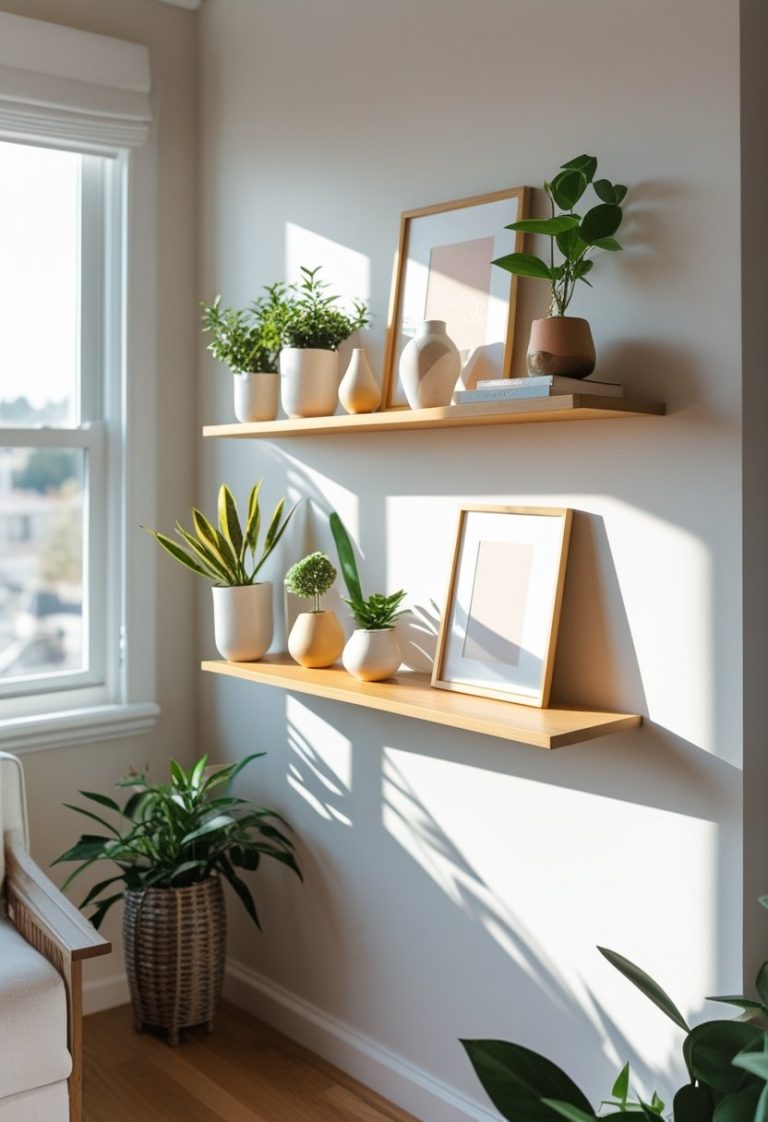What Is Electric Wallpaper? Exploring Its Technology and Applications
Electric wallpaper is a type of wall covering that integrates electrical components directly into the material. It serves both decorative and functional purposes by incorporating lighting, heating elements, or interactive features within the wallpaper itself.

This technology allows walls to emit light or warmth, offering a modern alternative to traditional lighting and heating solutions. Its application ranges from subtle ambiance enhancements to fully interactive surfaces.
People interested in innovative interior design or smart home upgrades often explore electric wallpaper for its unique combination of aesthetics and utility. Understanding how it works and where it can be used is essential for making informed decisions about its installation.
Understanding Electric Wallpaper

Electric wallpaper integrates technology with interior design, offering new functionalities beyond traditional wall coverings. It operates through embedded electrical components and compares distinctly to classic wallpaper in materials and uses.
Definition and Concept
Electric wallpaper is a type of wall covering that incorporates conductive materials or thin circuitry within its layers. It allows for electrical functionality, such as lighting, heating, or connectivity, without bulky fixtures.
It typically consists of printed conductive inks, flexible circuits, or transparent electrodes embedded in flexible substrates. The design keeps the wallpaper visually similar to traditional styles but adds technical features.
This innovation transforms walls from passive surfaces into active elements in smart homes or commercial spaces. It supports multiple uses, including mood lighting and interactive displays.
How Electric Wallpaper Works
Electric wallpaper functions by integrating low-voltage electricity into its layers. Conductive paths within the wallpaper carry current without impacting its look or texture.
Power is supplied through dedicated connections hidden at edges or behind the wall. The system controls embedded LEDs, sensors, or heating elements evenly distributed across the wallpaper.
Installation requires standard wall prep but also involves connecting the wallpaper to a power source and a control unit. The control system can be manual or IoT-enabled for automation.
Because the wallpaper uses low-voltage electricity, it is safe for typical indoor environments when installed according to guidelines and standards.
Comparison to Traditional Wallpaper
Traditional wallpaper serves purely decorative purposes using paper, vinyl, or fabric materials. It does not incorporate electrical or interactive elements.
Electric wallpaper, on the other hand, incorporates electrical components without greatly changing texture or application. Its installation process is more complex, requiring electrical connection and often professional help.
Maintenance can differ: electric wallpaper may need occasional checks for electrical integrity, whereas traditional wallpaper focuses on surface care.
While costs for electric wallpaper are higher due to technology integration, they open possibilities traditional wallpaper cannot offer, such as integrated lighting and heating.
Types of Electric Wallpaper

Electric wallpaper varies by function and technology, adapting to different needs like heating, interactivity, or automation. Each type offers unique features that influence its application and user experience.
Heating Electric Wallpaper
Heating electric wallpaper integrates thin, flexible heating elements within the wallpaper material. It functions as a low-profile radiant heating system, providing warmth without bulky radiators or heaters.
Installation is similar to traditional wallpaper, but it connects to a power source, often controlled via a thermostat. This type is energy-efficient and suitable for continuous, gentle heating in living spaces.
Safety features typically include temperature regulation and automatic shutoff to prevent overheating. It works well in areas needing supplemental heat, like bedrooms or offices.
Interactive and Display Wallpapers
Interactive wallpapers incorporate touch-sensitive or motion-responsive technology. They change appearance or display information based on user interaction or environmental triggers.
These wallpapers often include embedded LED arrays or microdisplays that can show images, animations, or digital art. They serve both decorative and informational purposes, enhancing user engagement.
Users can customize themes, colors, and patterns through connected devices. Applications range from advertising and branding to home decoration, giving walls dynamic visual capabilities.
Smart and Sensor-Activated Variants
Smart electric wallpapers connect with home automation systems and include built-in sensors. They can adjust functions based on temperature, light, or occupancy.
This category enables wallpapers to activate heating, lighting, or display elements automatically. Integration with voice assistants and smartphone apps allows for remote control and scheduling.
Sensors enhance energy savings by operating only when needed. These variants provide convenience and efficiency for tech-savvy users seeking seamless environmental control.
Key Features and Benefits

Electric wallpaper offers practical advantages beyond its visual appeal. It provides controlled heating with energy-saving potential, flexibility in design, and built-in safety measures to suit different environments.
Energy Efficiency
Electric wallpaper uses low-voltage electrical resistance to generate heat evenly across surfaces. This direct heating system reduces energy loss common in traditional radiators or forced-air systems. It often operates at 30-80 watts per square meter, which can lower overall heating costs.
Users can pair it with smart thermostats or timers to optimize energy use, heating spaces only when needed. The thin, flexible design means less heat is absorbed by walls compared to bulky heaters, improving the efficiency of heat transfer to the room.
Aesthetics and Customization
Electric wallpaper can be printed with various patterns, textures, or images, allowing integration with interior design. It is available in multiple finishes, including matte and glossy, to match different styles.
Installation is straightforward since it adheres directly to walls without disrupting existing decor. The system can be cut to size or combined with other panels for custom layouts. This flexibility supports both functional heating and creative expression.
Safety Considerations
Manufacturers design electric wallpaper with built-in protection against overheating and electrical faults. It generally meets strict international safety standards, including insulated wiring and temperature limiters.
It stays cool to the touch, reducing burn risks, and is suitable for use in homes with children or pets. Proper professional installation and regular inspections are recommended to maintain safety and long-term performance.
Applications of Electric Wallpaper

Electric wallpaper offers multifunctional solutions tailored to various environments. It integrates technology with design, bringing both aesthetic value and practical features.
Residential Uses
In homes, electric wallpaper can provide heating, lighting, or interactive surfaces without bulky equipment. It is often installed in living areas, bedrooms, or hallways to create warmth through integrated heating elements that replace traditional radiators. This contributes to cleaner walls and efficient heat dispersion.
Some variants include touch-sensitive controls for adjusting temperature or lighting directly on the wall. Others incorporate LED components for mood lighting or display capabilities. Electric wallpaper helps in reducing energy costs by targeting specific zones rather than heating an entire house uniformly.
Commercial Spaces
In offices, retail, and hospitality settings, electric wallpaper enhances ambiance while serving functional roles. It can illuminate spaces with customizable lighting patterns that promote brand identity or improve customer experience.
Businesses use it for digital signage embedded discreetly within walls or to maintain constant background heating with minimal maintenance. In conference rooms, this technology provides visual displays without extra devices, saving space and creating a modern look.
Electric wallpaper also supports energy efficiency in commercial buildings by enabling zonal heating and lighting, reducing overall operational costs.
Installation and Maintenance

Proper planning and specific steps are essential for installing electric wallpaper safely and effectively. Maintenance involves regular inspection and avoiding damage to ensure lasting performance.
Preparation and Requirements
Electric wallpaper requires a smooth, clean, and dry wall surface for proper adhesion. Any cracks, holes, or uneven textures must be repaired before installation.
The electrical supply must support the wallpaper’s voltage and current demands. A licensed electrician should assess the wiring and may need to install dedicated circuits.
Necessary tools include a voltage tester, adhesive compatible with the wallpaper type, and insulating materials. Protective gear such as gloves and eye protection is recommended.
Installation Process
The wallpaper is typically rolled out and aligned carefully on the wall. Adhesive is applied either to the back of the wallpaper or the wall, depending on manufacturer instructions.
Electric connections are made by linking the integrated conductive layers to the power source carefully, ensuring no exposed wiring. All connections should be insulated and secured.
Pressure rollers may be used to ensure firm contact with the wall and to remove air bubbles. Testing the electrical functionality before finalizing installation is crucial.
Maintenance and Longevity
Regularly inspect the wallpaper for any signs of wear, damage, or electrical faults. Use a non-invasive method like a voltage tester to check for continuity.
Avoid puncturing, cutting, or exposing the wallpaper to water. Clean the surface gently with a dry or slightly damp cloth and avoid harsh chemicals.
Over time, electrical connections should be checked by a professional for safety and performance. Proper care can extend the wallpaper’s function for several years.
Technological Innovations

Electric wallpaper has advanced significantly, focusing on connectivity and materials. These changes aim to enhance user experience and durability while expanding functionality.
Integration with Smart Home Systems
Electric wallpaper now supports seamless integration with leading smart home platforms like Google Home, Amazon Alexa, and Apple HomeKit. This allows users to control lighting, temperature, and other embedded functions via voice commands or smartphone apps.
Such integration uses low-voltage electrical systems embedded within the wallpaper layers. These systems communicate through Wi-Fi or Bluetooth, enabling automation routines and remote management.
Additionally, compatibility with security systems enables electric wallpaper to react to environmental changes, such as adjusting brightness when motion is detected. Installation typically includes a bridge device to connect the wallpaper to the home’s network.
Recent Developments in Materials
Manufacturers have introduced flexible conductive inks that replace traditional wiring in electric wallpaper. These inks are printed directly onto the wallpaper surface, reducing bulk and improving installation ease.
New insulating layers increase safety by preventing electrical shocks and fire risks. These layers are breathable, maintaining wall integrity while ensuring longevity.
Materials now also include self-cleaning and anti-microbial coatings. These features improve hygiene and reduce maintenance, especially in high-traffic or public spaces. The combination of durability and smart materials extends the wallpaper’s functional lifespan.
Limitations and Challenges
Electric wallpaper requires a power source, which can limit its placement on walls without nearby outlets or wiring. This need often complicates installation and may increase costs.
Durability is a concern as electric wallpaper can be sensitive to damage from moisture, punctures, or abrasion. Users must handle it carefully to maintain functionality over time.
The technology is still emerging, leading to higher prices compared to traditional wallpaper. This can make it less accessible for widespread use in residential or commercial spaces.
Compatibility with other wall treatments is limited. Applying paint, adhesives, or mounting objects on electric wallpaper may interfere with its electrical components.
Safety standards are essential due to the electrical nature of the product. Improper installation or defects could pose fire hazards or electrical shocks if not properly managed.
Maintenance involves specialized knowledge. Repairs often require professional service, as handling electric wallpaper differs significantly from standard wall coverings.
| Challenge | Impact |
|---|---|
| Power dependency | Limits placement and adds cost |
| Durability issues | Requires careful handling |
| High cost | Reduces accessibility |
| Limited compatibility | Restricts use with other wall treatments |
| Safety concerns | Necessitates strict installation standards |
| Maintenance needs | Requires professional repairs |
Future Trends in Electric Wallpaper
Electric wallpaper is expected to evolve with advancements in materials and technology. Researchers are focusing on improving flexibility and durability while maintaining energy efficiency.
Smart integration will become more common. Future designs may include sensors that adjust lighting or temperature automatically based on environmental changes.
Energy harvesting capabilities are another potential development. This could allow electric wallpaper to generate power from ambient sources like light or heat, reducing dependence on external electricity.
Manufacturers are exploring customizable aesthetics as well. Users might be able to change patterns or colors via smartphone apps, combining functionality with personal design preferences.
Security features may also improve. Embedded electronics could include anti-tampering measures or connectivity with home security systems for enhanced safety.
| Trend | Description |
|---|---|
| Flexibility & Durability | Enhanced materials for longer lifespan and easy installation |
| Smart Integration | Automated responses to light, temperature, or movement |
| Energy Harvesting | Power generation from ambient environmental sources |
| Customizable Design | User-controlled appearance changes via digital interfaces |
| Security Enhancements | Embedded tech for tamper resistance and monitoring |






